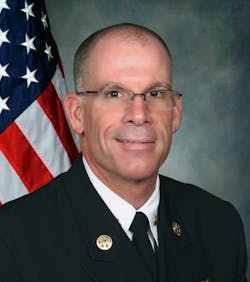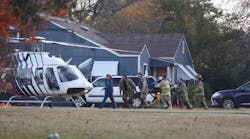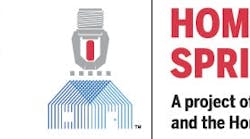Standing in the shadows of a burnt-out single-family home in Brooklyn with fire crews completing the final stages of overhaul, the FDNY Commissioner informs the media that tragedy has once again struck the City of New York. An unattended heating plate was determined to be the cause of a fire that claimed the lives of seven children and injured their mother and her eldest child.
As I listened to the Commissioner speak before the throngs of reporters, I immediately thought of an article I had previously read by former FDNY Chief of Department Edward Croker titled, “Our Losing Fight Against Fire: Cases of Bravery and Danger to No Purpose—Heroic Firemen and Improved Firefighting Machinery, But No Gain on the Loss of Life and Property.” Chief Croker penned this article after having witnessed the devastating Triangle Shirtwaist Fire that claimed the lives of 146 workers on March 25, 1911. Now, more than 104 years later, while smaller in numbers, the devastation continues.
The question is why—why are we continuing to face these devastating losses despite the countless advancements in modern firefighting technology, the growing prominence of technical training and equipment amongst our firefighters and the ever increasing public knowledge about the hazards of fire?
As odd as it may sound, the answer may have best been defined in a book written by Ralph Nader in 1965 titled, “Unsafe at any Speed: The Designed-in Dangers of the American Automobile.” While many may dismiss Nader’s work for his controversial role in American politics over the years, what he revealed about the American auto industry paints an equally telling story about our uphill quest for fire prevention and the political barriers that prohibit the implementation of preemptive technologies, despite the continued loss of lives.
In 1964, highway accidents costs the American taxpayer $8.3 billion in property damage, medical expenses, lost wages and insurance expenses—a total that, at the time, represented nearly 2 percent of the gross national product (GNP). In short, traffic accidents represent economic demand and opportunity for business and consumer growth. The same can be said for fire, but at what costs?
It’s a topic that very few within our profession (or society for that matter) choose to talk about, but it represents the purest battle for which we as firefighters and fire officers fight. Nader said it best when he described the basis for societies’ continued support for post-accident response when he said, “Working in the area of prevention of these casualties earns few fees. Consequently our society has an intricate organization to handle direct and indirect aftermaths of collisions. But the true mark of a humane society must be what it does about prevention of accident injuries not the cleaning up of them afterward.”
According to NFPA’s March 2014 report, The Total Costs of Fire in the United States, fire costs U.S. taxpayers approximately $329 billion in 2011, which equates to 2.1 percent of our GDP. And while one cannot argue the fact that the same destructive forces that destroy lives and property also provide the financial well being for many within our society (homebuilders, insurance brokers, lawyers and, to some degree, even firefighters), the question remains: Is there a better way?
So I ask you, with these hard-hitting facts, the politics and the financial realities on the table, what's the value of one life, the lives of seven children or more than 3,000 annually?
When each of us takes that oath to serve our community as firefighters, we do so never truly knowing the tasks that lie ahead, yet we willfully accept the responsibility bestowed upon us, “To save lives and protect property, to the best of our ability given the resources provided.” At the end of the day, the true mission of a "firefighter" is to work toward extinction—to prevent fires.
I firmly acknowledge that despite our most valiant efforts of fire prevention, public education and fire suppression, lives will continue to be lost due to the devastating effects of fire. What I’m not willing to accept is the notion that with the implementation of technology and preventative measures our society (or the fire service) cannot flourish and self-sustain. To accept this mindset is an acceptance of defeat or, worse yet, an unspoken resistance to change. And again I ask, at what cost are we willing to resist change?
We must never forget that a true selfless servant is one who courageously, willfully and without hesitation assumes the personal risk and sacrifice necessary to save the life of another—and doing so without limiting the form or circumstances in which these actions will be taken.






